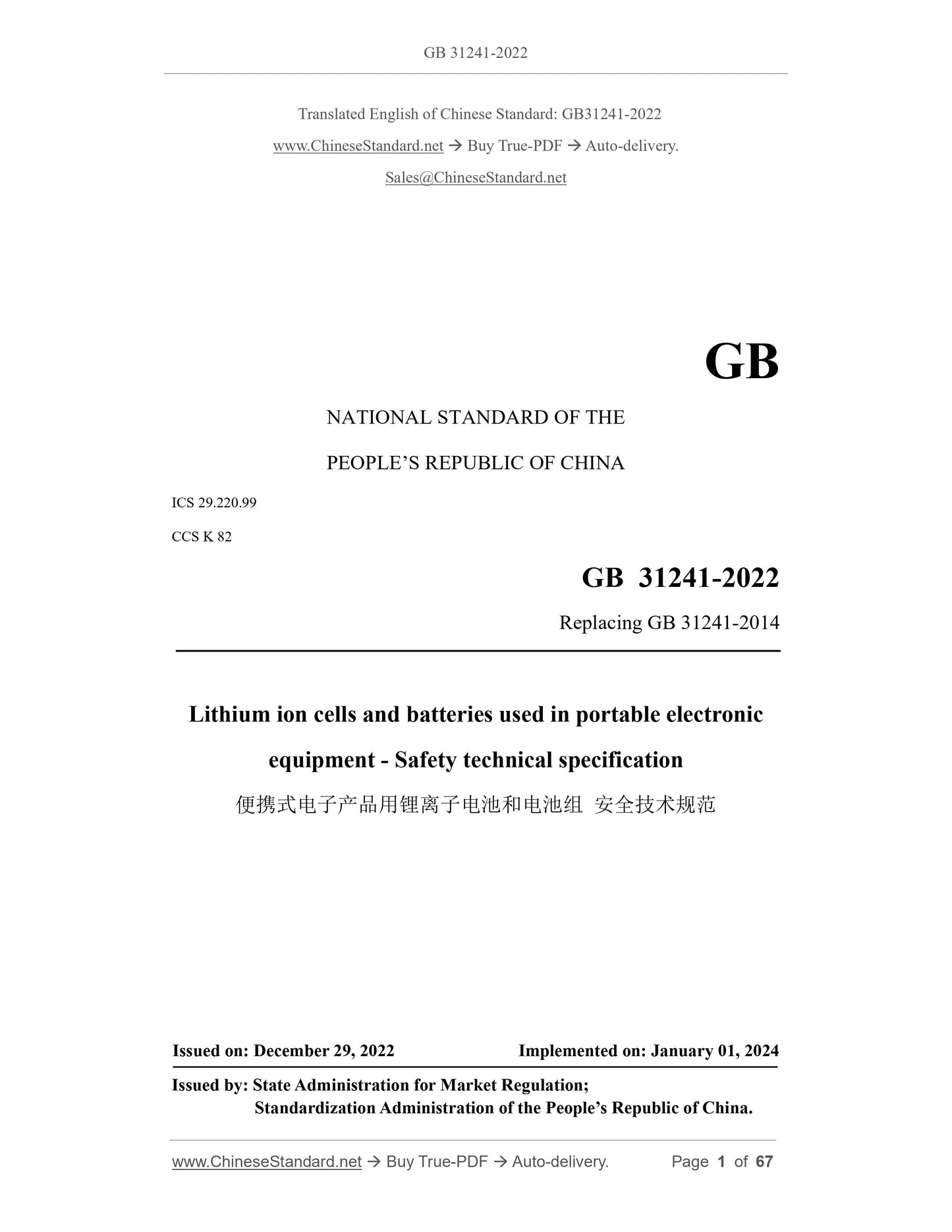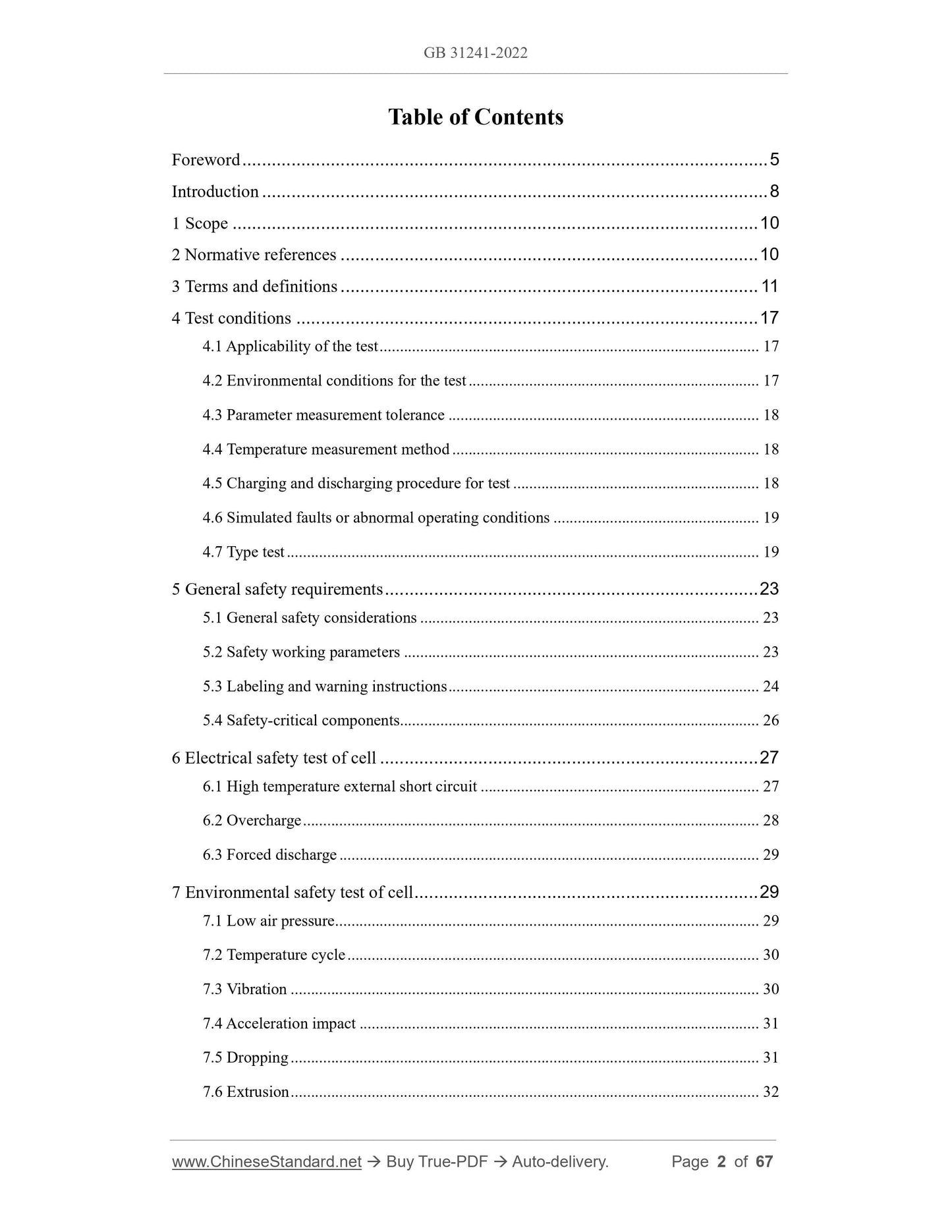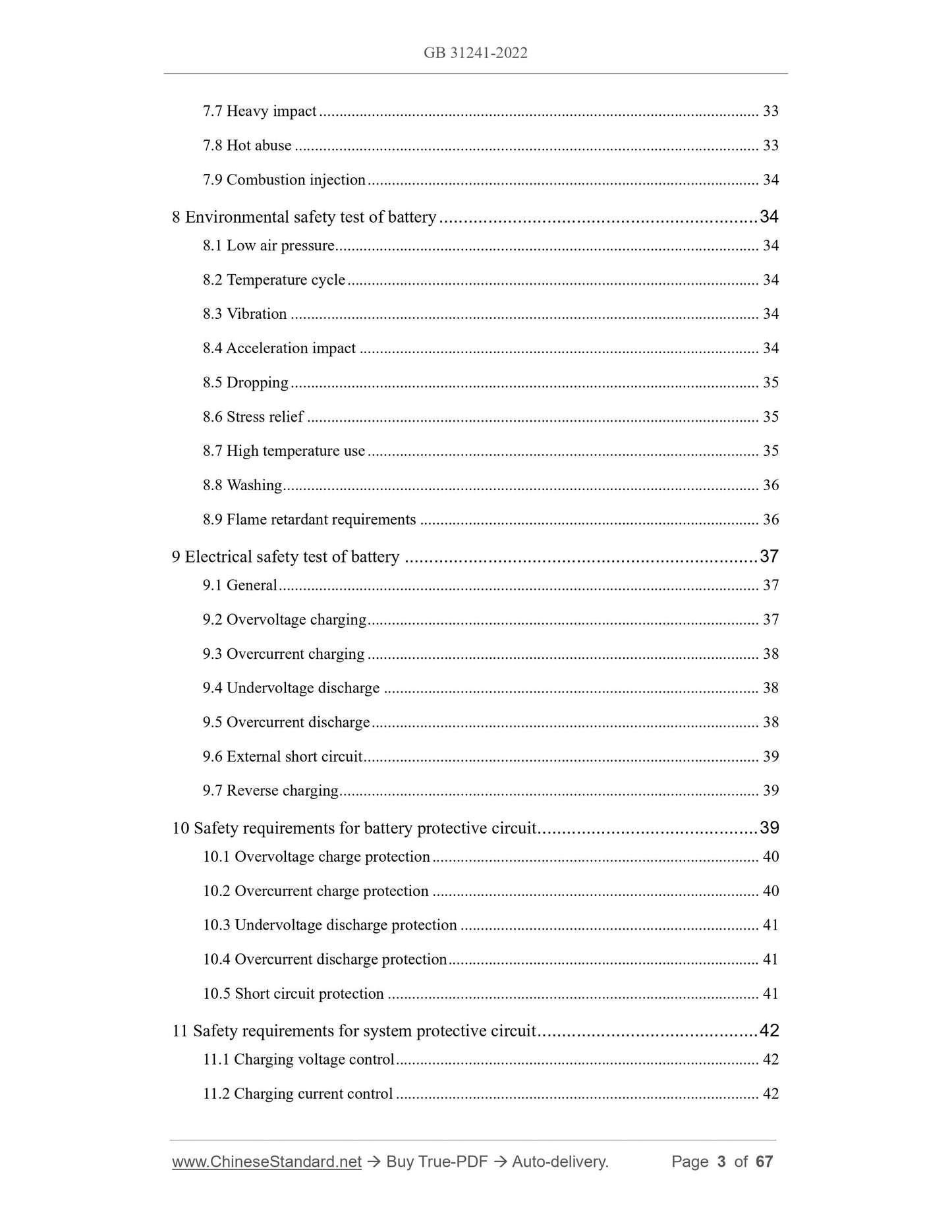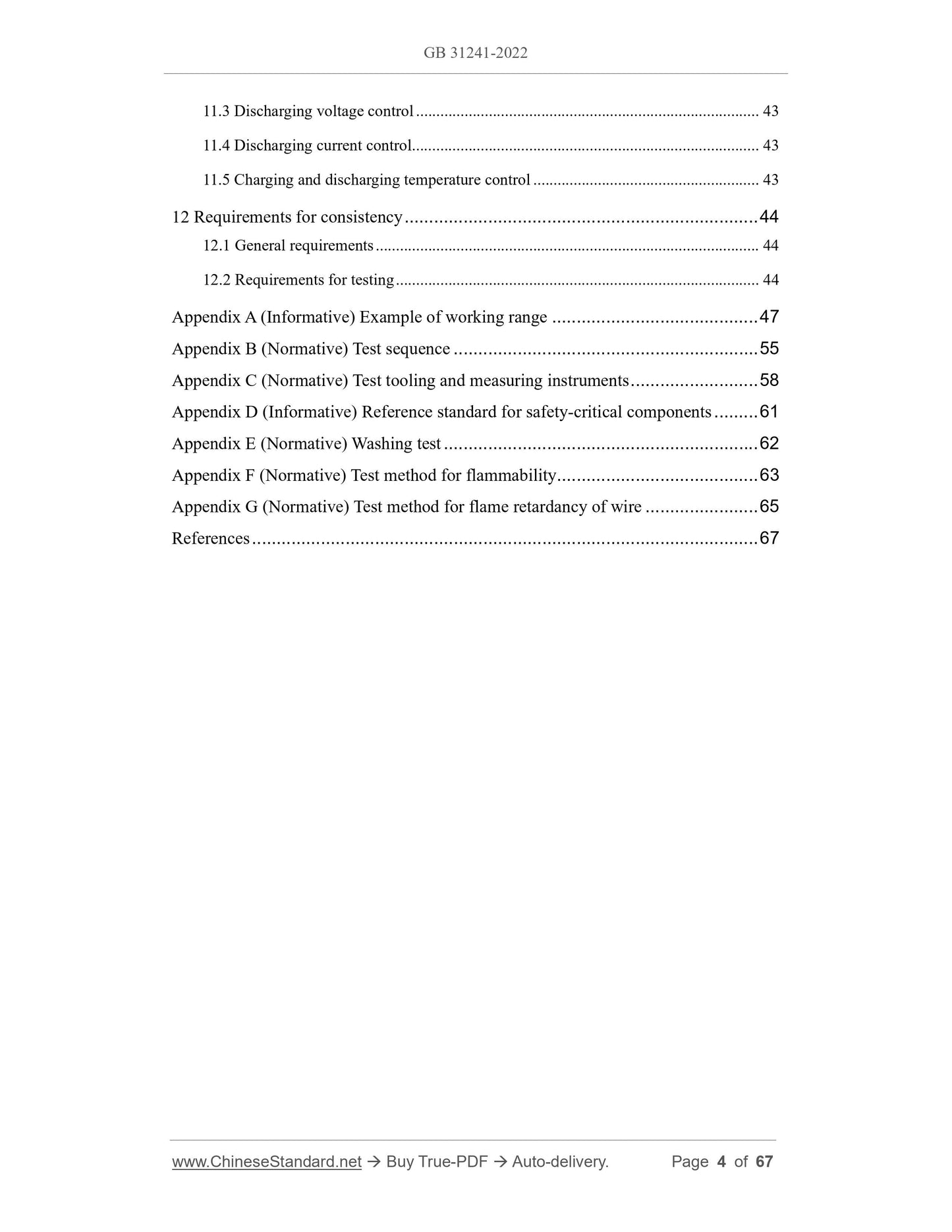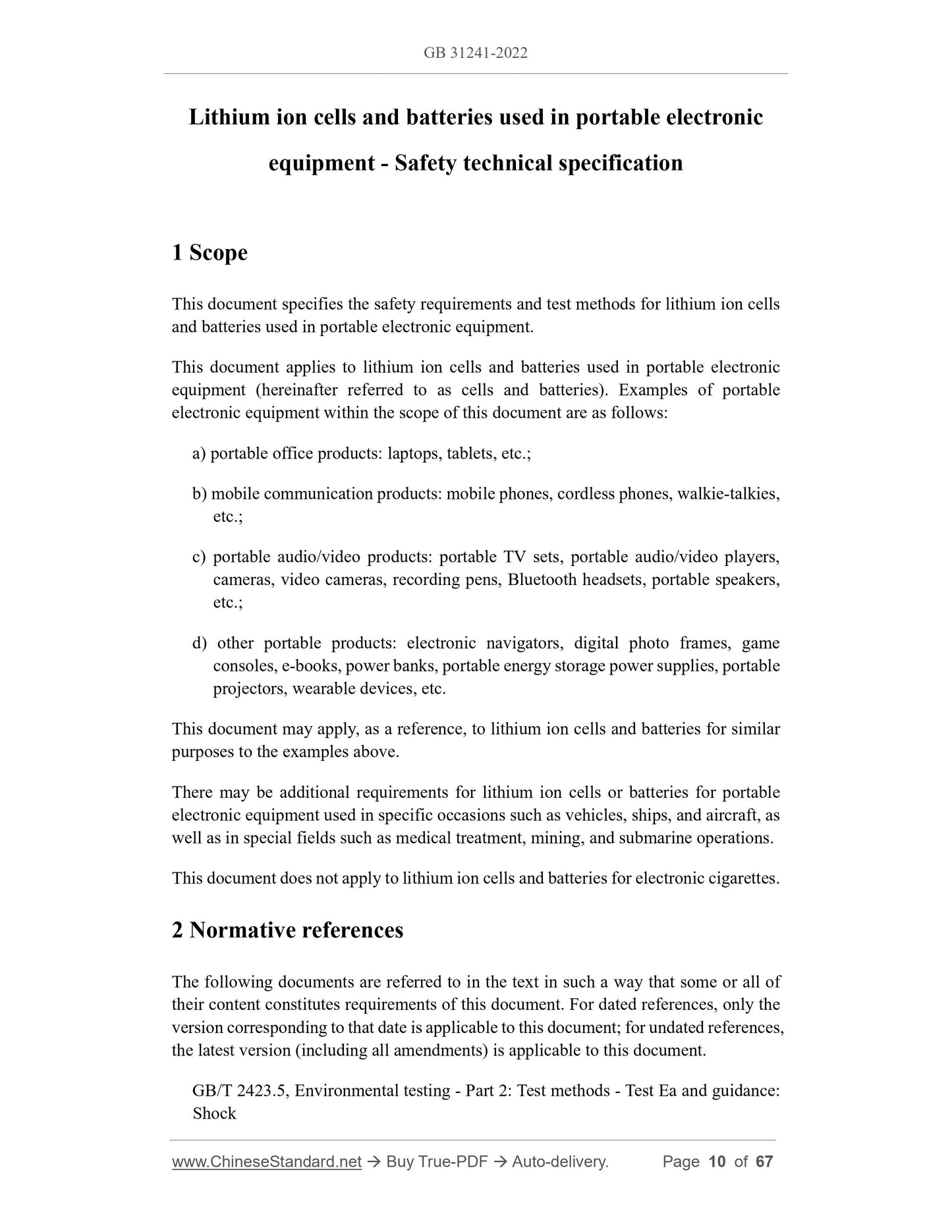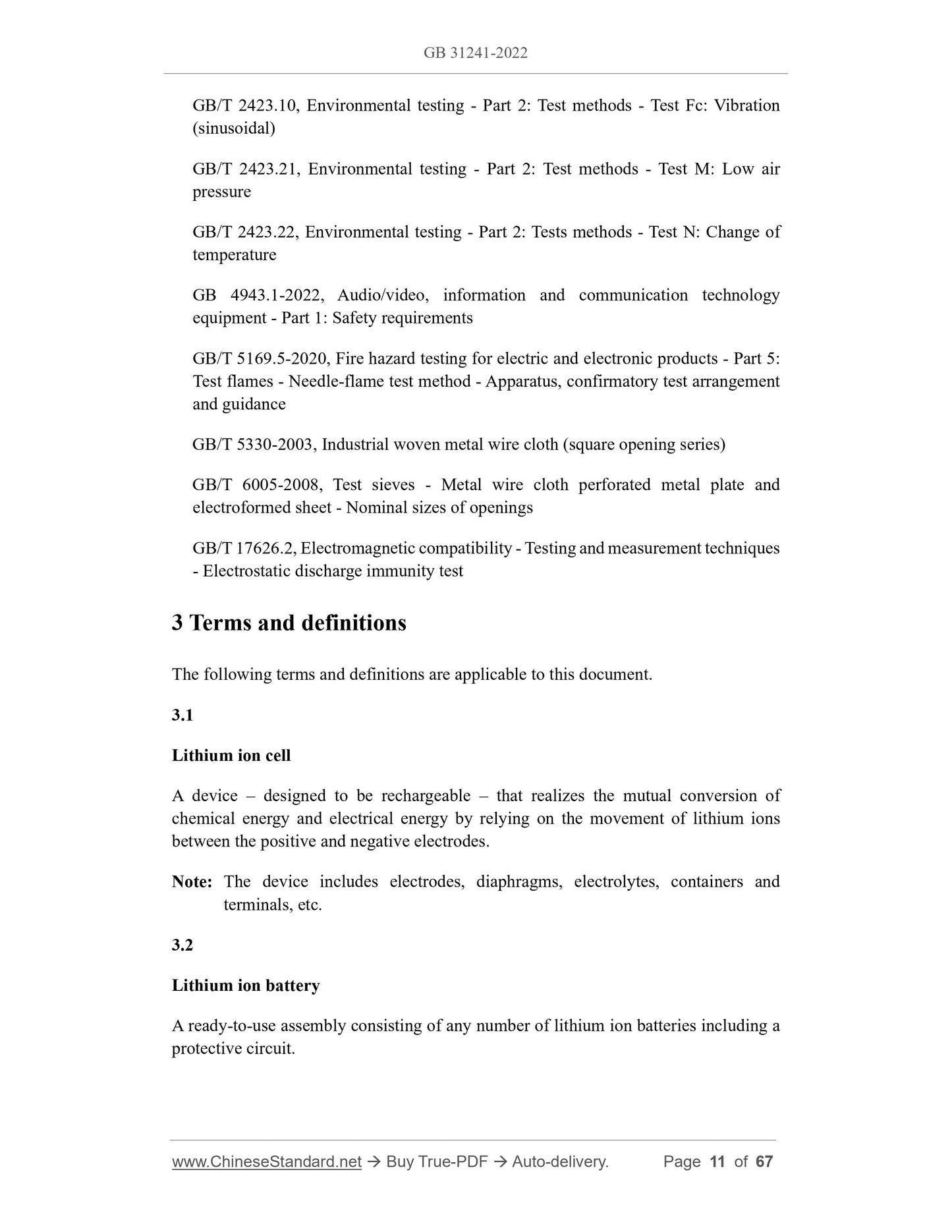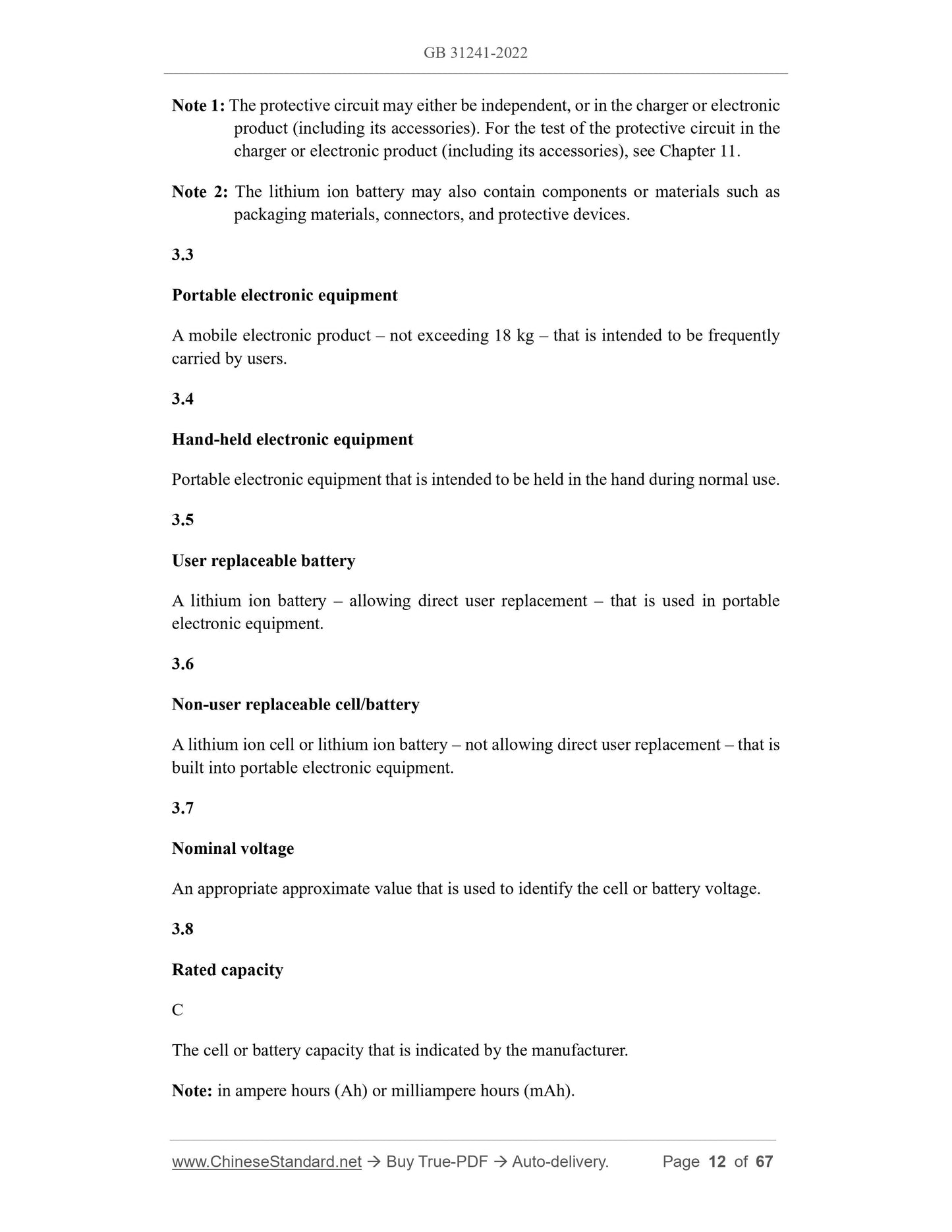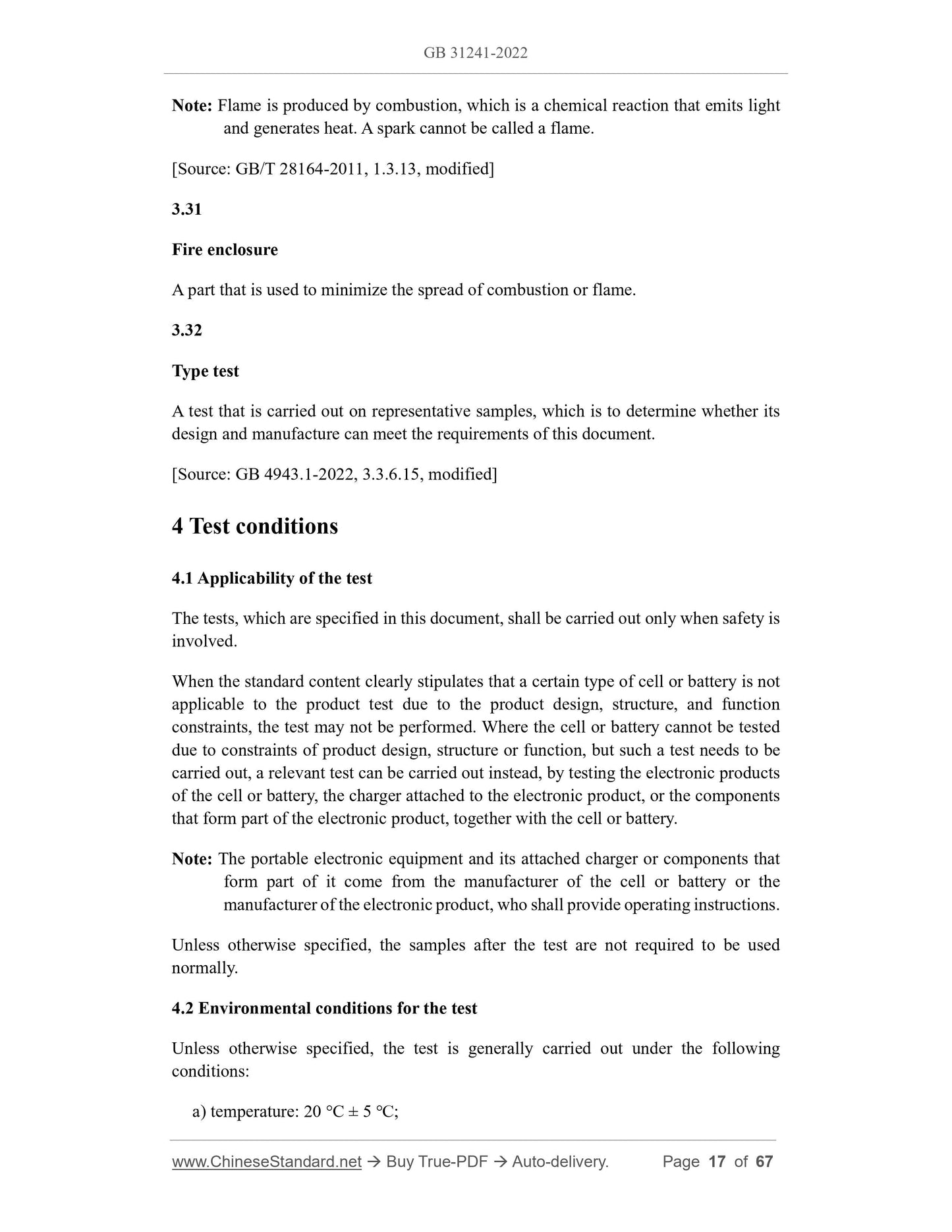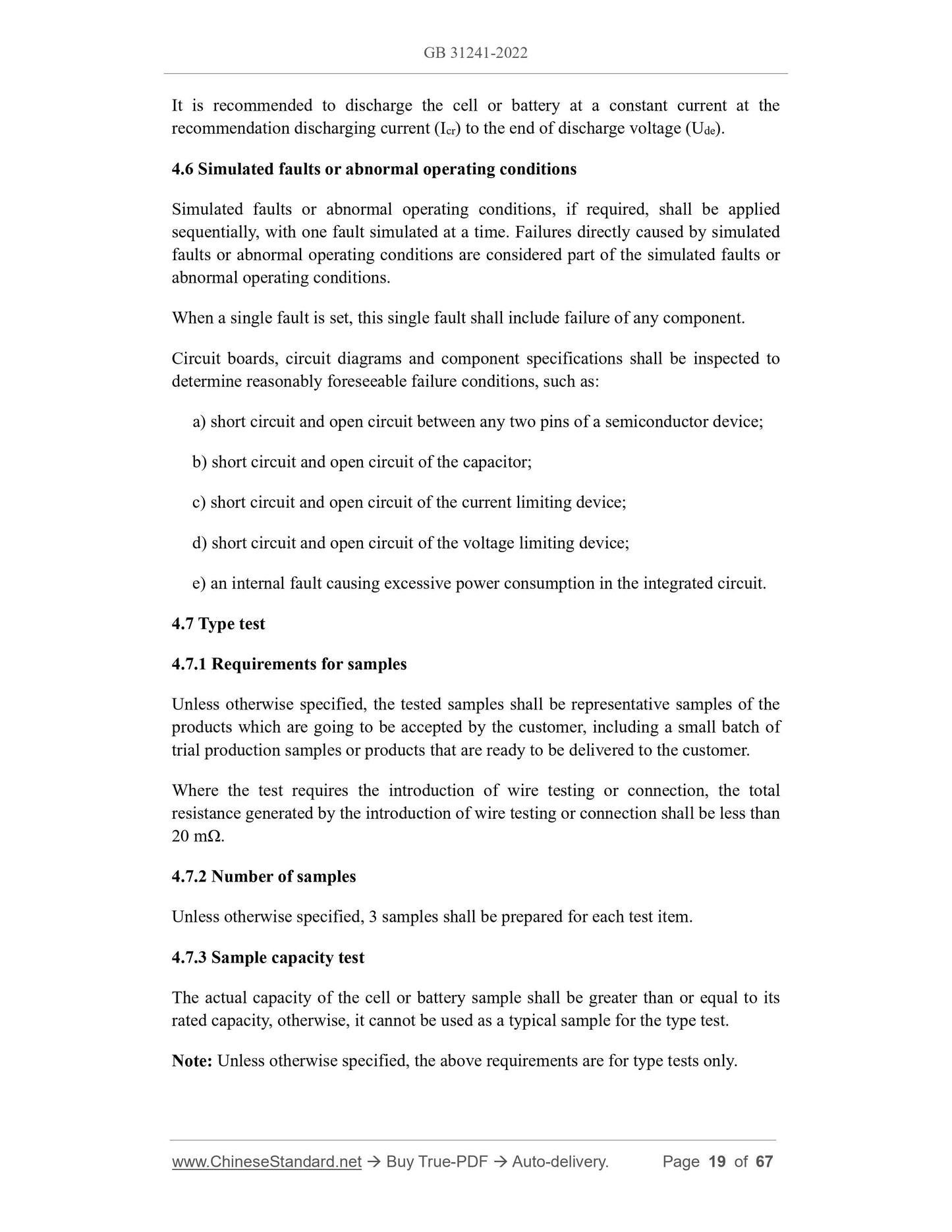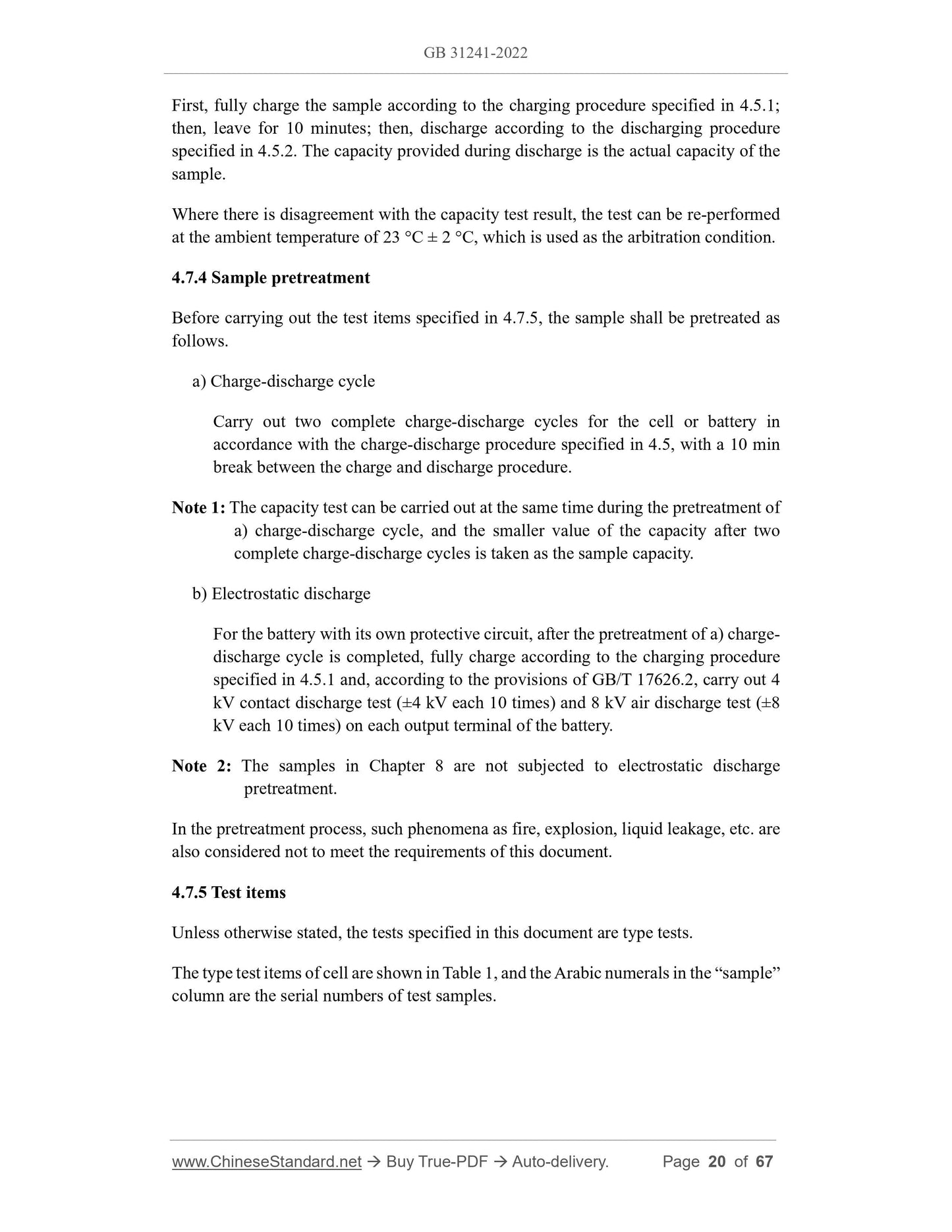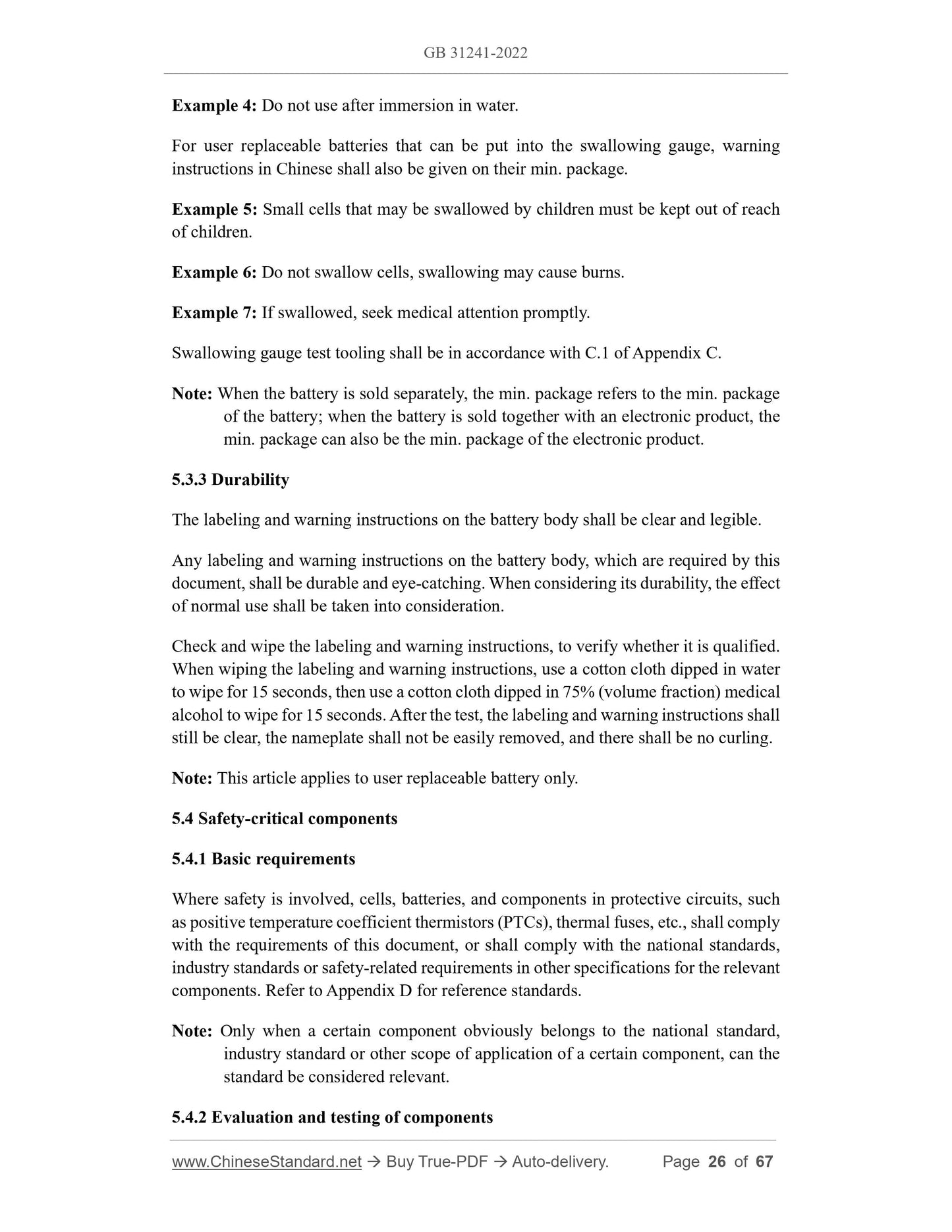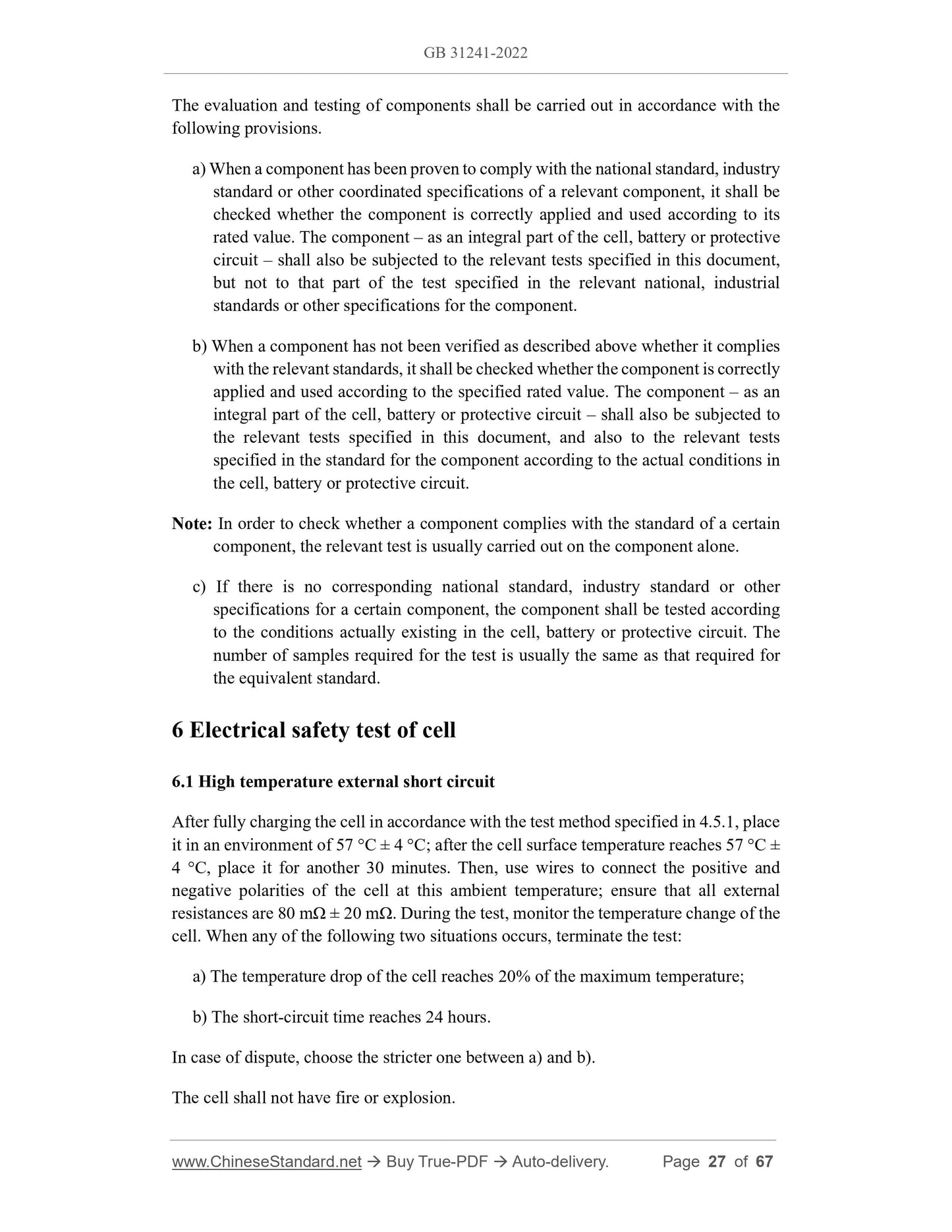1
/
of
12
www.ChineseStandard.us -- Field Test Asia Pte. Ltd.
GB 31241-2022 English PDF
GB 31241-2022 English PDF
Regular price
$605.00
Regular price
Sale price
$605.00
Unit price
/
per
Shipping calculated at checkout.
Couldn't load pickup availability
GB 31241-2022: Lithium ion cells and batteries used in portable electronic equipment - Safety technical specification
Delivery: 9 seconds. Download (and Email) true-PDF + Invoice.Get Quotation: Click GB 31241-2022 (Self-service in 1-minute)
Newer / historical versions: GB 31241-2022
Preview True-PDF
Scope
This document specifies the safety requirements and test methods for lithium ion cellsand batteries used in portable electronic equipment.
This document applies to lithium ion cells and batteries used in portable electronic
equipment (hereinafter referred to as cells and batteries). Examples of portable
electronic equipment within the scope of this document are as follows.
a) portable office products. laptops, tablets, etc.;
b) mobile communication products. mobile phones, cordless phones, walkie-talkies,
etc.;
c) portable audio/video products. portable TV sets, portable audio/video players,
cameras, video cameras, recording pens, Bluetooth headsets, portable speakers,
etc.;
d) other portable products. electronic navigators, digital photo frames, game
consoles, e-books, power banks, portable energy storage power supplies, portable
projectors, wearable devices, etc.
This document may apply, as a reference, to lithium ion cells and batteries for similar
purposes to the examples above.
There may be additional requirements for lithium ion cells or batteries for portable
electronic equipment used in specific occasions such as vehicles, ships, and aircraft, as
well as in special fields such as medical treatment, mining, and submarine operations.
This document does not apply to lithium ion cells and batteries for electronic cigarettes.
Basic Data
| Standard ID | GB 31241-2022 (GB31241-2022) |
| Description (Translated English) | Lithium ion cells and batteries used in portable electronic equipment - Safety technical specification |
| Sector / Industry | National Standard |
| Classification of Chinese Standard | K82 |
| Classification of International Standard | 29.220.99 |
| Word Count Estimation | 46,418 |
| Date of Issue | 2022-12-29 |
| Date of Implementation | 2024-01-01 |
| Older Standard (superseded by this standard) | GB 31241-2014 |
| Issuing agency(ies) | State Administration for Market Regulation, China National Standardization Administration |
Share
